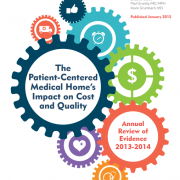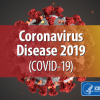You are looking at an archived version of our site. Please visit thepcc.org for a fresh, new experience!
Behavioral Health
One of the tenets of the Patient-Centered Medical Home and the Shared Principles of Primary Care, two models that PCC promotes, is that primary care should integrate the activities of those involved in an individual’s care across settings and services. These settings and services include care for a patient's behaviorial health. As primary care clinicians develop and maintain a relationship with their patients, they are in a position to recognize potential behavioral health concerns and help patients find the right type of care. Utilizing an integrated and coordinated primary care team will not only effectively get behavioral health care to those who need it, but also reduce the burden of behavioral health professionals.
This approach creates a more effective response to growing behavioral health concerns like the opioid crisis and increasing suicide rates. These crises are placing more and more burdens on the country's behavioral health delivery system so that even insured patients are having trouble accessing the care they need. Primary care presents a clear opportunity to meet these patients.
Promoting integration in the primary care community
The PCC is commited to increasing behavioral health care in the primary care space. In 2018, the PCC formed the Primary Care and Behavioral Health Integration Workgroup, with the goal of bringing experts from both fields together to more clearly identify the needs of behavioral health and the potential opportunities for primary care to be involved. The workgroup is made up of diverse members from PCC's Executive Membership and other key stakeholders. It works to advance primary care models that are team-based and comprehensive – treating the mind as well as the body – while referring patients to specialists only when appropriate.
The PCC is a proponent of both the collaborative care model and the primary care behaviorist model, which serve different, yet complementary needs, and has led efforts to ensure that behavioral health integration is a critical element for advanced primary care models, including PCMH.
The workgroup convenes monthly to identify and inform emerging issues in behavioral-health integration and to collectively pursue strategies that strengthen the ability of healthcare systems to deliver high-quality, whole-person care founded on primary care. The workgroup has issued consensus recommendations on behavioral-health integration, created an initial evidence base on the benefits of integrating behavioral health and primary care, and organized educational programs for the broader community.
Consensus recommendations for states
The PCC has provided a set of consensus recommendations out of the recognition that states currently have the potential to serve as a leading example for many other states grappling with behavioral health challenges, limited workforces, and inadequate primary care infrastructure to meet the challenges of today.
Resources

Pediatric Medical Home Infographic-Pediatrics is Changing | November 2015

Alliance For Health Reform | October 2015

Journal of the American Board of Family Medicine | September 2015

Journal of the American Board of Family Medicine | September 2015
This analysis looks at practices that integrate primary care and behavioral health. They found five key constructs that influence this integration. 1) Integration reach; 2) establishment of continuum of care pathways addressing the location of care across the range of patient's severity of illness; 3) approach to patient transitions; 4) location of the integration workforce; and 5) participants' mental model for integration. These constructs can be utilized by practices looking to integrate behavioral health into their primary care services.
Journal of the American Board of Family Medicine | September 2015

GAO | July 2015

National Association of Medicaid Directors | June 2015

The Patient-Centered Medical Home's Impact on Cost and Quality: Annual Review of Evidence, 2013-2014
Patient-Centered Primary Care Collaborative | January 2015
- ‹ previous
- 5 of 14
- next ›
News
July 30, 2021
- ‹ previous
- 5 of 34
- next ›
Events & Media
March 4, 2021 | PCDC
February 4, 2021 | PCDC
January 7, 2021 | PCDC
- ‹ previous
- 5 of 27
- next ›
Related Content
Pages
Pages
Associated Stakeholders:
Secondary menu
Copyright © 2024 Primary Care Collaborative











